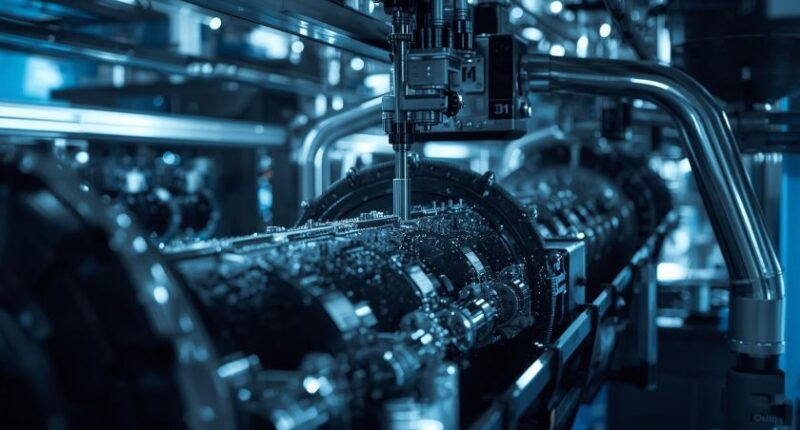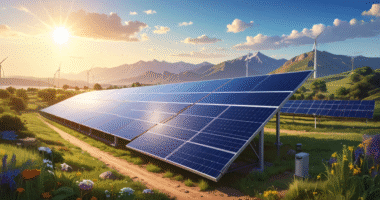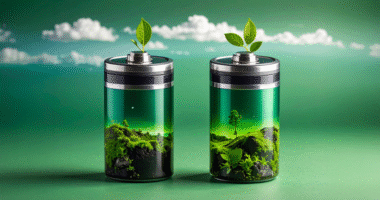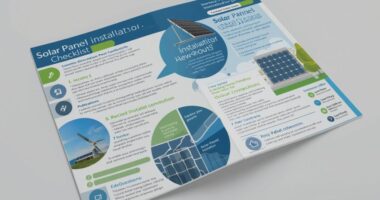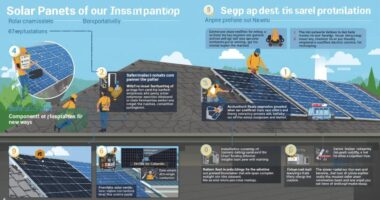In today’s energy-conscious world, improving efficiency is not just a goal — it’s a necessity. Among industrial processes, polysilicon production—the backbone of solar cell and semiconductor manufacturing—has long been known for its high energy demand. However, the Siemens process, a well-established method for producing ultra-pure polysilicon, is undergoing a revolution in energy efficiency.
This article explores how new technologies, optimized systems, and sustainable innovations are transforming the Siemens polysilicon production process, reducing costs and emissions while ensuring superior product quality.
Understanding the Siemens Polysilicon Process
What Is Polysilicon?
Polysilicon, or polycrystalline silicon, is a high-purity form of silicon used as the main raw material in photovoltaic (PV) solar cells and semiconductors. It serves as the essential link between raw silicon feedstock and finished solar panels.
How the Siemens Process Works
The Siemens process is a chemical vapor deposition (CVD) method that converts trichlorosilane (SiHCl₃) gas into solid polysilicon rods. The steps are as follows:
-
Purification of metallurgical-grade silicon (MG-Si) using hydrogen chloride gas to form trichlorosilane.
-
Deposition of trichlorosilane gas onto heated silicon rods inside a reactor at temperatures around 1,100°C.
-
Crystallization of silicon on the rods as polysilicon while hydrogen chloride gas is recycled.
While efficient in producing high-purity silicon, the Siemens process is notoriously energy-intensive, consuming up to 100–150 kWh per kilogram of polysilicon produced. That’s why improving energy efficiency is a top industry priority.
The Challenge: High Energy Demand in Polysilicon Production
Why Energy Efficiency Matters
Energy represents one of the largest operating costs in polysilicon plants, often accounting for 30–40% of total production expenses. Moreover, as renewable energy adoption increases, there’s growing pressure on manufacturers to ensure that solar components are produced sustainably.
Key Energy Challenges Include:
-
High reactor heating requirements
-
Energy loss during cooling and gas recirculation
-
Complex gas purification steps
-
Thermal inefficiencies in hydrogen and trichlorosilane recycling
Reducing energy waste in these stages directly affects production cost, carbon emissions, and overall supply chain sustainability.
Siemens’ Innovations in Energy-Efficient Polysilicon Production
1. Reactor Design Optimization
Modern Siemens reactors are being redesigned for enhanced thermal efficiency. Innovations include:
-
Better heat distribution to reduce energy loss.
-
Reflective inner coatings to recycle heat within the reactor chamber.
-
Advanced temperature control systems using AI-driven feedback loops to maintain optimal deposition rates.
These improvements have reduced energy use per kilogram of polysilicon by 20–30% in some modern plants.
2. Closed-Loop Gas Recovery Systems
In traditional systems, a portion of trichlorosilane and hydrogen gases was wasted during processing. Siemens’ upgraded facilities now use closed-loop gas recycling, recovering over 95% of by-product gases.
This not only cuts energy consumption for gas purification but also reduces raw material waste—creating a more circular production model.
3. Smart Process Automation
Siemens integrates digital twins, machine learning, and IoT (Internet of Things) monitoring into its manufacturing line.
These systems continuously analyze data on:
-
Reactor temperature and pressure
-
Gas flow rates
-
Energy input vs. deposition output
By applying predictive analytics, Siemens can optimize process parameters in real-time, achieving maximum yield with minimum energy input.
Integrating Renewable Energy into Polysilicon Manufacturing
Powering the Process with Solar and Wind
Many of Siemens’ next-generation plants are powered by renewable electricity sourced from solar, wind, and hydropower. By replacing fossil-based electricity, the overall carbon footprint of polysilicon production is reduced dramatically.
This is particularly important since polysilicon is the foundation of the solar energy industry—producing it with clean energy ensures a truly sustainable value chain.
Hydrogen as a Clean Energy Source
Hydrogen, a by-product of the Siemens process, is now being recycled as a fuel or feedstock. Instead of venting or wasting it, the hydrogen can be used to:
-
Generate power through fuel cells.
-
Supply heat for reactors.
-
Feed back into the trichlorosilane synthesis process.
This creates a self-sustaining energy loop that improves efficiency while reducing environmental impact.
Comparing Siemens to Alternative Polysilicon Technologies
Siemens vs. Fluidized Bed Reactor (FBR)
The Fluidized Bed Reactor process offers continuous production and lower energy use—around 60–80 kWh/kg, compared to 100–150 kWh/kg in Siemens systems. However, the Siemens process still maintains the highest product purity (11N–12N), making it the preferred choice for semiconductors and premium solar panels.
Recent Siemens innovations are closing the efficiency gap, bringing energy consumption down to 80–90 kWh/kg while preserving superior purity levels.
Siemens vs. Upgraded Metallurgical Silicon (UMG-Si)
UMG-Si is a lower-cost alternative with less energy demand, but it cannot yet match the purity of Siemens-grade polysilicon. For high-efficiency PV cells and advanced chips, the Siemens process remains unmatched.
Economic and Environmental Impact
Cost Reduction Through Efficiency
Energy-efficient systems help Siemens and other manufacturers achieve:
-
Lower operational costs
-
Higher production throughput
-
Reduced dependency on external utilities
As a result, global polysilicon prices are stabilizing, making solar power even more affordable for consumers.
Lowering Carbon Emissions
By integrating green power, waste heat recovery, and hydrogen reuse, Siemens has reduced carbon emissions per ton of polysilicon by up to 40%. This supports both corporate sustainability goals and international climate commitments.
The Future of Polysilicon Production: Smart, Green, and Scalable
AI-Driven Energy Management
Siemens continues to develop AI-driven production systems that can autonomously adjust energy loads, predict maintenance needs, and reduce downtime. These innovations will allow the industry to meet rising global solar demand without a proportional rise in energy use.
Modular and Compact Plant Designs
Future plants are expected to adopt modular reactor designs, enabling rapid scaling of capacity while maintaining optimal energy performance. This trend will make localized polysilicon production feasible in more regions, reducing transportation emissions and costs.
Circular Manufacturing
By combining recycling, green hydrogen, and renewable-powered operations, Siemens is moving toward a circular energy ecosystem—one that minimizes waste and maximizes efficiency across the solar supply chain.
Conclusion
The Siemens process has long been a symbol of high-purity polysilicon production. Now, it’s becoming a model for energy efficiency and sustainability. Through advanced reactor design, digital automation, renewable integration, and circular resource management, Siemens is reshaping the future of materials manufacturing.
As the world races toward carbon neutrality, innovations like these ensure that clean energy starts with clean production. The revolution in Siemens polysilicon efficiency is not just about saving energy—it’s about building a foundation for a sustainable, solar-powered future.
